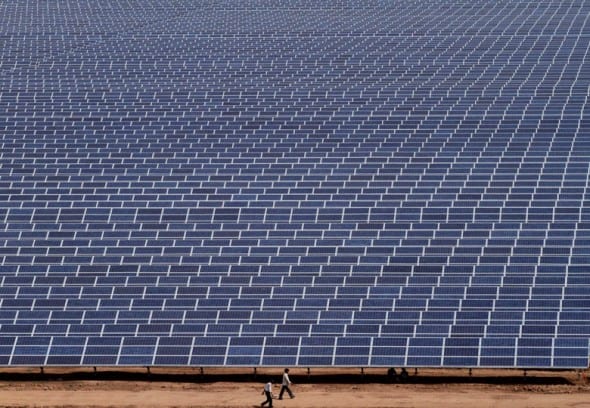Solar power is headed for a “huge year” in Australia in 2017, a new report has predicted, on the back of a boom in the large-scale market and a home solar and storage market that is expected to treble.
The Climate Council’s State of Solar 2016, published on Thursday, confirms solar is now the cheapest form of new large-scale power generation, as costs of the technology tumble and investment soars.
According to the report, solar costs have plummeted by 58 per cent in just five years and look set to continue to fall by somewhere between 40 and 70 per cent by 2040.
Already, however, solar plants are delivering electricity for cheaper than new coal, gas or nuclear, the report says, at prices of around $110/MWh – a price that is expected to come down further, “significantly”, over time.
This compares to the price of new coal power – a generation source recently championed by Australia’s Turnbull government – which the report notes is on the rise, potentially reaching $160/MWh for cost of electricity. It has been put at more than double that cost with added carbon capture and storage technology.
For Australia, which has endured a few false starts on large-scale solar, the report said development was now “surging”, with 20 projects coming online in 2017 and another 3700MW in the pipeline.
On this path, the Climate Council predicts Australia will surpass 20GW of solar PV in the
next 20 years, equivalent to about a third of Australia’s current total power generation capacity.
The distributed solar market was also headed for major growth, the report said, with the installation of rooftop PV and battery storage systems for households and businesses expected to treble over the course of the year.
Currently, more than 6,500 Australian households have a solar and storage system installed, the report says.
On rooftop solar, the report says South Australia and Queensland are currently competing for top installation rates, with both states reaching around 30 per cent of households with PV.
In WA, 24 per cent of households have solar PV systems, followed by Victoria and New South
Wales on 15 per cent. According to the report, the current average small-scale solar system
size is 5.34kW.
“Australia adds more solar power every year than the combined capacity of South Australia’s (recently closed) Northern and Playford coal-fired power stations,” the report says.
The report also notes that roughly 8000 Australians are now employed in solar, a sector that, globally, employs 2.8 million.
Labor’s shadow climate and energy minister, Mark Butler, has welcomed the report’s findings, describing it as good news for affordable, stable, and clean energy in Australia.

Butler has also used the occasion of the report’s release to take a pot-shot at the Turnbull government, for a policy approach he says has “threatened the creation of thousands of new jobs and an affordable and secure energy future.”
“This week we have seen the energy minister Josh Frydenberg once again trash renewable energy and continue the government’s push for taxpayer funded expensive and polluting new coal-fired power stations,” he said.
“As Andrew Stock from the Climate Council put it; ‘The government’s energy rhetoric does not match reality… global investment has moved firmly to renewable energy.”










